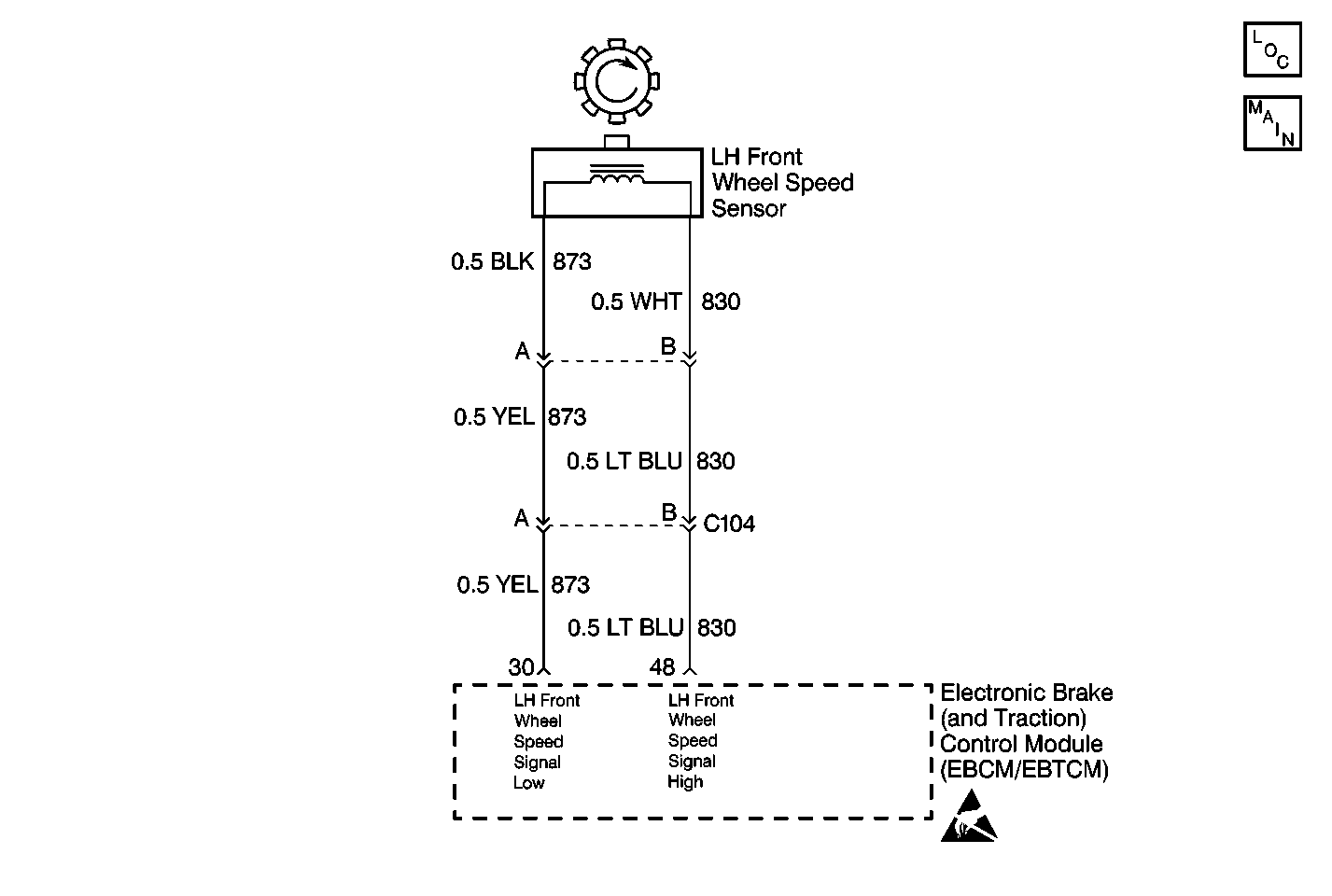
Circuit Description
The wheel speed sensor creates an AC voltage as each wheel turns. The frequency of the voltage is proportional to the wheel speed.
The voltage is magnetically induced. The voltage is caused by a toothed sensor ring (mounted on the drive axle) which passes the stationary pickup coil of the wheel speed sensor.
The EBCM/EBTCM uses the wheel speed sensor signal in order to calculate the following values:
| • | The vehicle reference speeds |
| • | The speed of each wheel |
| • | The acceleration |
| • | The slip values |
Use these values in order to determine when antilock or traction control (when equipped) is required.
Conditions for Setting the DTC
The DTC C1227 sets under the following conditions:
| • | The EBCM/EBTCM does not see any wheel speed sensor signal. |
| • | The EBCM/EBTCM determines that continuity exists in the circuit. |
One of the following conditions may cause the DTC C1227 to set:
| • | A dislodged wheel speed sensor |
| • | A missing toothed sensor ring (front) |
| • | A defective hub and bearing assembly (rear) |
Action Taken When the DTC Sets
The following actions will be taken when the DTC sets:
| • | A malfunction DTC is stored |
| • | The ABS is disabled |
| • | The ANTILOCK indicator lamp is turned ON |
Conditions for Clearing the DTC
The DTC will be cleared under following conditions:
| • | Conditions for the malfunction are no longer present. Use the Scan Tool clear DTCs function. |
| • | 100 ignition switch key cycles have passed with no malfunctions detected |
Diagnostic Aids
One of the following conditions may cause an intermittent malfunction:
| • | A poor connection |
| • | A rubbed through wire insulation |
| • | A wire that is broken inside the insulation |
Inspect any suspect circuitry for the following conditions:
| • | Backed out terminals |
| • | Improper mating |
| • | Broken locks |
| • | Improperly formed or damaged terminals |
| • | Poor terminal to wiring connections |
| • | Physical damage to the wiring harness |
Test Description
The numbers below refer to step numbers on the diagnostic table:
-
This step ensures that the sensor is capable of putting out the necessary voltage to the EBCM/EBTCM.
Step | Action | Value(s) | Yes | No |
|---|---|---|---|---|
1 | Was the ABS Diagnostic System Check performed? | -- | Go to Step 2 | |
2 |
Does the sensor have any physical damage? | -- | Go to Step 7 | Go to Step 3 |
3 |
Is the resistance within the specified range? | 850-1350 ohms | Go to Step 4 | Go to Step 8 |
Is the AC voltage greater than the specified value? | 100 mV | Go to Step 5 | Go to Step 8 | |
5 |
Is the resistance within the specified range? | OL (Infinite) | Go to Step 6 | Go to Step 9 |
6 |
Does the DTC reset? | -- | Go to Step 10 | |
7 |
Does the DTC reset? | -- | Go to Step 3 | |
8 | Replace the LH front wheel speed sensor. Refer to Front Wheel Bearing and Hub Replacement in Front Suspension. Is the repair complete? | -- | Go to Step 11 | -- |
9 | Repair the short between CKT 873 and CKT 830. Refer to Wiring Repairs in Wiring Systems. Is the repair complete? | -- | Go to Step 11 | -- |
10 | Replace the EBCM/EBTCM. Refer to Electronic Brake and Traction Control Module Replacement . Is the repair complete? | -- | Go to Step 11 | -- |
11 | Test drive the vehicle above 24 km/h (15 mph) for at least 30 seconds while monitoring the Scan Tool for ABS/TCS DTCs. Does the DTC reset? | -- | Go to Step 2 |
